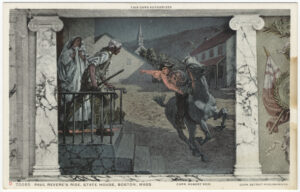
Mardi Gras – An All or Nothing Lesson
Last evening at the stroke of Midnight, Mardi Gras officially ended. Fat Tuesday, Carnival or Shrove Tuesday. Whatever you call Mardi Gras, the celebration includes rich foods, richer costumes, vibrant music and dancing. It remains the Christian feast before the fast (Lent). In an ironic twist, perhaps this celebration pre-dates Christ as the Roman winter solstice holiday of Saturnalia. Whether adopted from a pagan ritual or begun centuries later, Mardi Gras has been celebrated for well over 1,000 years with local traditions evolving along the way.
Venice, Italy offers the opportunity to avoid the hoi polloi of all the commoners at parades while attending balls and dances intended for the upper of the upper crust. Too fancy? Try Barranquilla, Columbia where you can don an elephant mask complete with a long trunk and large ears like everyone else. Perhaps Binche, Belgium is more your speed where men parade dressed as their wives or mothers. They then dance with brooms to chase away evil spirits. Freud would have a field day with that tradition.
Need to cool down from all the partying? In Goa, India, Mardi Gras revelers douse each other with buckets of colored water. Still too hot? Go to Quebec City, Canada to take a Fat Tuesday snow bath in your bathing suit. If you work up an appetite, return to Belgium for oranges thrown to the crowds from the floats. For dessert, travel to the first place of Mardi Gras celebration in the United States, Mobile, Alabama, to receive that Southern delicacy, Moon Pies, thrown from floats. And for those with a need for more, try Mardi Gras in Cologne, Germany which begins 11-11-11 (November 11 at 11 a.m.) continuing until Ash Wednesday months later.
One Mardi Gras among these stands out for its traditions – New Orleans. As Mark Twain stated: “An American has not seen the United States until he has seen Mardi Gras in New Orleans.” Still being fairly new to the global Mardi Gras scene, the first New Orleans Mardi Gras was in 1857, many traditions can be fairly traced backed to their origins. Reviewing some of this history and traditions allows us to better appreciate the current New Orleans festivities and helps us to understand Mr. Twain’s bold assertion. Surprisingly, in researching this history, an unlikely link between this annual cultural phenomenon and the mediation process became apparent.
In 1857, the Mystic Krewe of Comus secured the assistance of Mardi Gras organizers from nearby Mobile, Alabama to put on a parade including themed floats with masked krewe members. The parade was intended for public participation while the associated formal balls were limited to krewe members. For decades, five krewes – Comus, Rex, Twelfth Night, Monus, and Proteus – controlled the Mardi Gras scene. Membership in krewes was limited to moneyed elites while the parades remained for public consumption. By the early 1900s, those “left out” of the krewes formed their own krewes often based on heritage or even cultural bonds (Irish, Italian, German, African-American krewes).
Notably, the oldest krewe, Comus, stopped parading in 1991 after Louisiana passed a bill requiring krewes to integrate. The Mystic Krewe of Comus gave up a 134 year tradition instead of integrating. The fact that it took until 1991 to compel integration may be more surprising than the facts that a krewe was not integrated by that date or that the krewe opted to end its run rather than integrate.
The Shrove Tuesday elaborate costumes and masks were hardly unique to New Orleans Mardi Gras. Yet, they served additional purposes in the Big Easy. The costumes served as disguises which then allowed some non-krewe members to participate in balls with concealed identities. Some New Orleans costumes served “economic” purposes as well. African-American prostitutes would dress up as “Baby Dolls” (a term coined by their white male clients) to gain access to festivities in the hope of securing work at a time when sex work was racially restricted. The irony of Baby Dolls working the refused-to-be-integrated Mystic Krewe of Comus events is not lost on anyone.
The Mardi Gras color scheme of green, gold and purple is a New Orleans invention originating with the Rex Krewe. The Rex Krewe named a “king” for each year’s Mardi Gras – King Rex. In 1872, that year’s King Rex liked the color combination of gold, purple and green. He decreed them the official colors of the Rex Krewe. In 1892, to add legitimacy or purpose to these colors, that year’s King Rex declared that purple represented justice, green symbolized faith, and gold stood for power. These colors have dominated ever since the royal decrees.
The phenomenon of throwing beads from floats to parade goers dates back to the late 1890s. Initially, the Carnival King would throw fake rings and gems to his loyal subjects. In the 1920s, the krewes all joined in the tradition of tossing glass beads during the parades leading to the current tradition of throwing plastic beads. In 1910, some krewes threw coconuts from the floats as the glass beads that year were too expensive. Not surprisingly, the City of New Orleans has had to repeatedly excavate tons of strands of beads from its storm drains.
A Mardi Gras tradition from Europe of baking sweet treats and pastries before the period of fasting continued in New Orleans. The King Cake containing a special item hidden in the cake well pre-dated any New Orleans Mardi Gras. Indeed, that practice can be traced back to the pagan ritual of Saturnalia. Whoever found the hidden item in the cake would be king for a day.
The New Orleans twist of using a small baby figurine representing the infant Jesus from the Feast of the Three Kings in King Cakes may be more opportunistic than religious. A local New Orleans baker in the 1940s came across a surplus supply of French porcelain dollhouse figures. The baker placed a baby figurine in each King Cake paving the way for a new tradition.
As with many traditions, the origins, if they can be determined, are quite often humble or even non-sensical. A King Rex liked gold, green and purple and two decades later these colors became the unofficial, official colors of Mardi Gras. A King needs to honor his subjects so now everyone throws plastic beads (good thing that the coconuts did not catch on). A baker has a box of baby figurines and now we all hope to get the piece of King Cake with the baby.
In researching these traditions and how they evolved, the actions of the Comus Krewe stood out as a possible mediation lesson. Why would the oldest active krewe opt to render itself irrelevant rather than comply with an integration law. The bill passed in 1991, not 1891. Societal norms and perceptions changed regarding integration decades before this law had to be adopted. Certainly, the law could not come as a surprise to the Comus Krewe in 1991. Perhaps membership had dwindled so much or costs increased so much for the Comus Krewe that they welcomed the 1991 law as an excuse to call it quits. Hopefully, the Comus Krewe members did not genuinely believe integration to be so inherently bad that the self-destruction alternative was more appealing. Regardless of the reason, these actions remain squarely in the “all or nothing” camp. The Comus Krewe ended up with “nothing” rather than address the new reality.
In mediation, many participants start out in the all or nothing camp. Litigants state they will remain firm on principle. Others pledge a belief in legal arguments or summary judgment motions which cannot possibly lose in court. Still others assert that they would rather fight and exhaust all litigation avenues, including appeals, instead of settling with the adverse party. As a mediator, I am fine with these positions being advanced as they convey a seriousness or purpose, a view of case worth, or an understanding of the applicable facts and law. The challenge becomes when a mediation participant becomes stuck on such an issue and refuses to compromise regardless of counterpoints or compromises offered by the adversary.
When a party becomes so entrenched, a reminder of the plight of the Comus Krewe may assist in explaining litigation risks. Trials become all or nothing for the parties. While a large monetary award may be celebrated by a plaintiff, this same plaintiff could be unconsolable if there is a complete defense verdict. The large award would still need to be preserved through appeals. There exist no guarantees anywhere in the litigation process. Instead, trials remain “You win. You lose.” propositions.
In contrast, settlement provides certainty and guarantees the outcome. The underlying dispute ends through resolution instead of the issues being made quite public like the plight of the Comus Krewe. Most often, mediation settlements remain confidential rather than the world knowing who “won” and who “lost”. In mediation settlements, the parties can craft agreements well beyond the claims in litigation. The parties can define future conduct among themselves and not have their conduct dictated by rulings of third parties.
The Comus Krewe had ample opportunity over the course of decades to address its segregation policies and issues. By 1991, they effectively challenged the legislature to act as the Comus Krewe would not compromise. The legislature told the Comus Krewe “You Lose.” In mediation, participants and lawyers must avoid placing themselves in the role of the Comus Krewe in refusing to compromise. The alternative is an all or nothing result. Like the Comus Krewe, you may end up on the nothing side of the equation.




